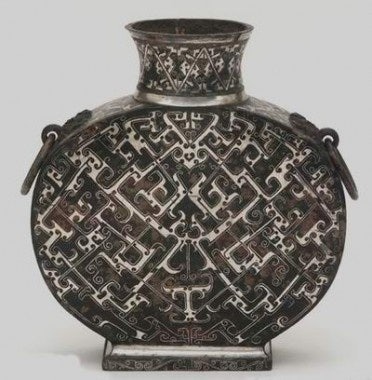Engraving, Cloisonné, Gold Weaving Feature Throughout China's Imperial Past#
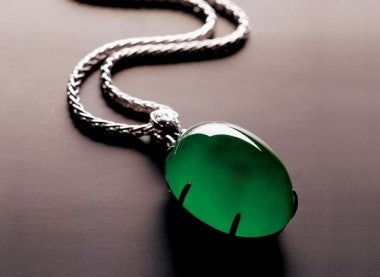
Although China's clout in the luxury industry has grown along with high-end spending by its consumers, many homegrown Chinese brands have eschewed traditional Chinese design and handcrafting techniques, often choosing to pass themselves off as imports to uneducated consumers. Despite the obsession with imported brands that remains among most of China's luxury shoppers, however, some domestic brands are starting to realize that a market for modern designs that incorporate traditional Chinese handicrafts does exist. This market will likely grow in coming years as "luxury fatigue" sets in among some of Shanghai or Beijing's sophisticates. From NE-TIGER to Shang Xia, the expectation of a greater interest in traditional handicrafts in China drives the business strategy of several Chinese brands.
This week, Phoenix Online highlights "seven traditional jewelry techniques from China's 5,000-year history" that we might see more designers incorporating into their designs in coming years (translation by Jing Daily team):
1. Beijing Enamel (烧蓝)#
"Also known as 'silver enamel,' this technology flourished during the Qing Dynasty (1644-1912). The Beijing Enamel process is typically used in silver jewelry-making, particularly in north China. Contemporary artists have taken up the Beijing Enamel process in recent years, managing to innovate by using it in new and interesting ways."
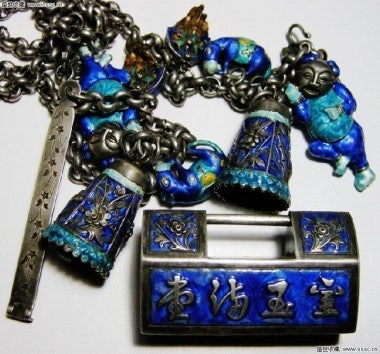
2. Cloisonné (景泰蓝)#
"Cloisonné, also known as 'copper wire enamel,' is one of the most famous traditional crafts of China. The style's production techniques matured during the Ming Dynasty's Jingtai period (1449–57 CE), and it typically incorporates blue enamel glaze. Hence it's known in Chinese as Jingtai blue. Cloisonné is one of the top traditional exports of China, and was seen in the courts of emperors throughout the imperial period. Nowadays, Cloisonné is undergoing a period of transition as more designers are using it in more modern designs."
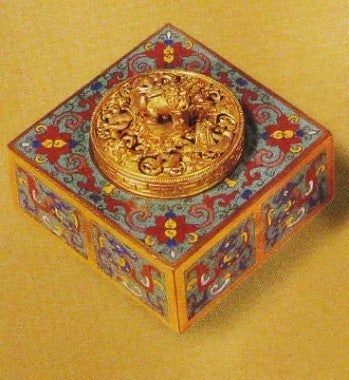
3. Jade carving (玉雕)#
"Today, modern jade carving is ushering in a new golden age. In 2002, the Jewelry Trade Association of China established a Chinese jade carving contest, which is now regarded as one of the most important professional awards in the country today."
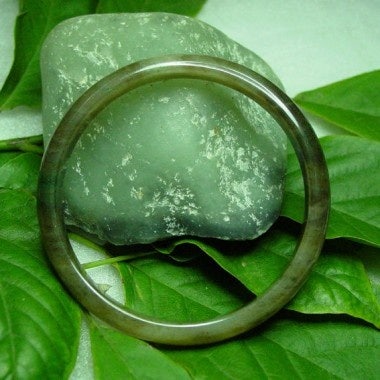
4. Filigree Inlaying (花丝镶嵌)#
"Filigree inlaying first appeared in China during the Shang Dynasty (1600–1046 BCE), and later became popular during the late Western Han Dynasty (206 BCE-220 CE). By the time of the Ming and Qing Dynasties, it had become one of the eight Yanjing traditional handicrafts. Today there are few craftsmen who work in filigree inlaying and the technique is in danger of fading away. However, with the famous Chinese jewelry and jade company Zhaoyi engaged in preservation initiatives, perhaps this traditional craft has a chance to live on and flourish in the years ahead."
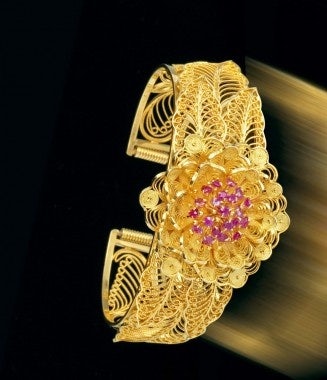
5. Engraving (錾刻)#
"Engraving as an art form has been around almost as long as Filigree Inlaying, having begun in the late Spring and Autumn Period and become popular during the Warring States period (475-221 BCE). Different engraving techniques were used over the years to decorate gold and silver with colorful patterns, peonies and chrysanthemums, fairies, unicorns, phoenixes and dragons in the traditional Chinese style."
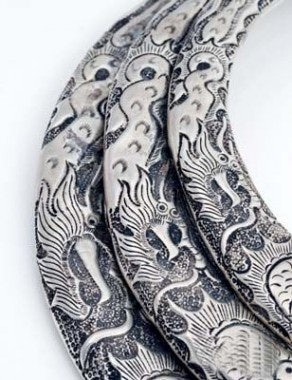
6. Kingfisher Feather Ornamentation (点翠)#
"As a traditional process in the creation of gold and silver jewelry production, due to the complexity of the process, the difficulty of preserving the finished product, and the use of kingfisher feathers -- which is more difficult as environmental protection requirements become stricter -- this traditional jewelry-making technique has almost been lost. The vast majority of examples of this type of ornamentation we see today have been handed down from the Qing Dynasty, since the technique really peaked during the Qianlong period (1735-1799 CE)."
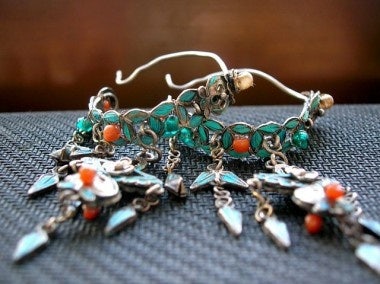
7. Gold and Silver Threading (金银错)#
"First appearing in the Shang and Zhou Dynasties and mainly used in the decoration of bronze vessels, over the course of history gold and silver threading gradually disappeared from the world stage as a result of the difficulty of the process. Today, though, some artisans are bringing this art form back to life, restoring thousands of years of lost time."
